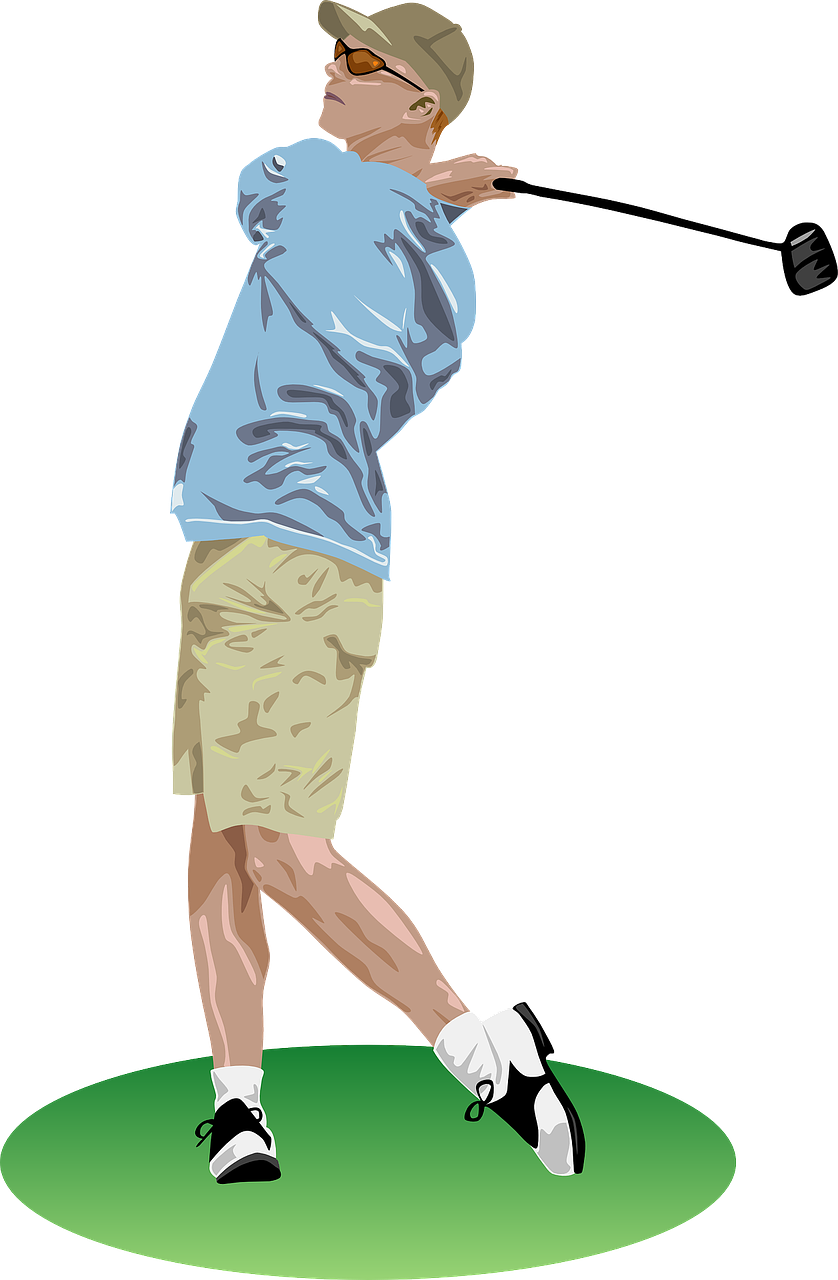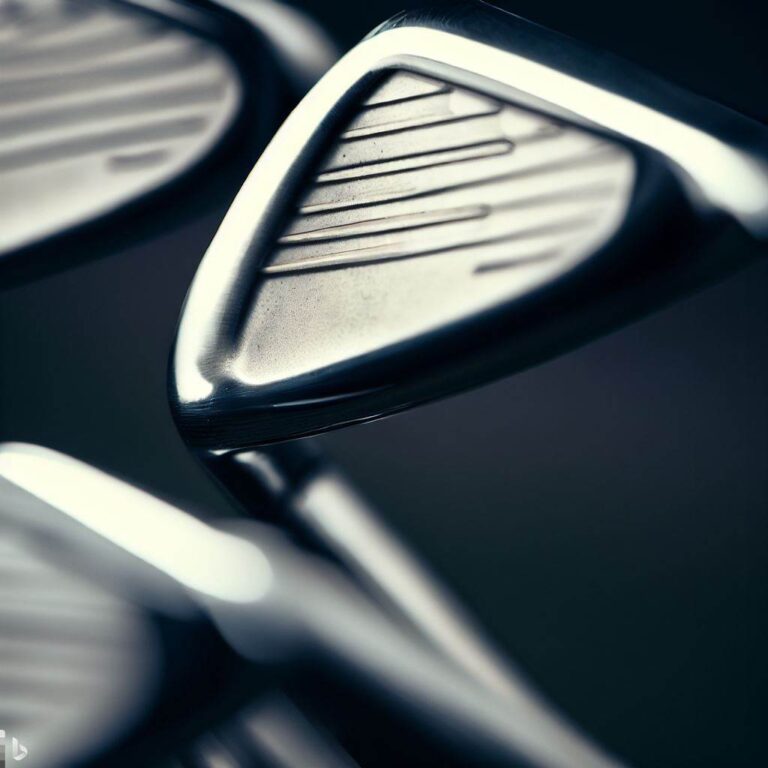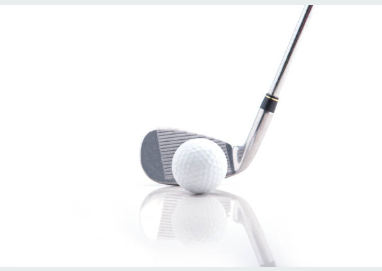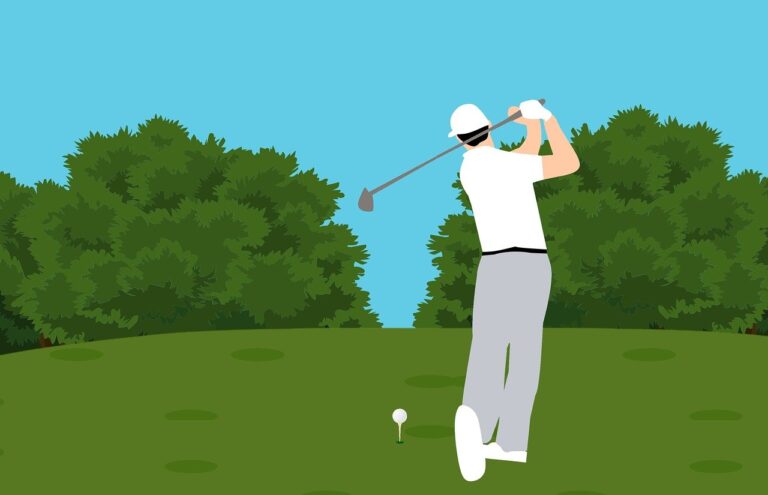What is a draw in golf?
Golf is a sport that demands both precision and finesse, with players often needing to master various types of shots to navigate the course successfully.
Among these shots is the draw, which is favored by many golfers for its ability to shape the ball’s flight in a controlled manner.
In this article, we’ll explore the draw shot in detail and provide tips on how to execute it effectively.
What Is a Daw in Golf?
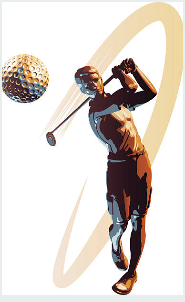
So, exactly what is a draw in golf?
A draw in golf is a controlled shot that produces a gentle curve in the ball’s flight from right to left (for right-handed golfers) or left to right (for left-handed golfers). The draw is achieved by generating a sidespin on the golf ball, which is a result of the clubface being slightly closed relative to the swing path at the moment of impact.
Many skilled golfers favor the draw shot because it tends to provide additional distance and a more penetrating ball flight compared to a straight shot or a fade.
Additionally, the ability to shape the ball’s trajectory around obstacles or along the contours of the fairway can give golfers a strategic advantage on the course. To successfully execute a draw, golfers must pay attention to their grip, clubface alignment, and swing path.
Understanding Golf Shots:
Before we delve into the draw, it’s important to understand the different types of shots that can be executed in golf, as well as the fundamental principles that govern a golf swing.
The Anatomy of a Golf Swing.
A golf swing can be broken down into several key components: the grip, the clubface alignment, and the swing path. Each of these elements plays a crucial role in determining the outcome of a shot, and golfers must fine-tune each aspect to achieve the desired ball flight.
Different Types of Golf Shots.
There are numerous types of golf shots, each with its own characteristics and uses on the course. Some of the most common shots include the fade, the slice, the hook, and the draw.
These shots are defined by the curvature they impart to the ball’s flight, and they can be used strategically to avoid obstacles or set up ideal positions for subsequent shots.
The Draw Shot in Golf.
The draw shot is a controlled shot that curves from right to left (for right-handed golfers) or left to right (for left-handed golfers). It’s a popular shot among skilled golfers because it tends to provide additional distance and a more penetrating ball flight.
Characteristics of a Draw Shot.
A draw shot is characterized by a gentle, controlled curve that moves the ball from right to left (or left to right for lefties).
This curvature is achieved by generating sidespin, which is a result of the clubface being slightly closed relative to the swing path at impact. The draw is distinct from a hook, which is a more exaggerated curve that can be difficult to control.
The Benefits of a Draw Shot.
The draw shot offers several advantages, including:
- Increased distance: Due to the lower trajectory and reduced backspin, a draw shot can often travel farther than a straight or fade shot.
- Penetrating ball flight: The draw’s lower trajectory helps the ball cut through the wind more effectively, making it a useful shot in windy conditions.
- Improved course management: The ability to shape shots around obstacles or to follow the contours of the fairway can give golfers a strategic edge, allowing them to better position themselves for subsequent shots.
How to Hit a Draw in Golf
Executing a draw shot requires a combination of proper grip, clubface alignment, and swing path.
I have earlier posted a more comprehensive guide on how to hit a perfect draw Here, but for the sake of this post, let’s break down each of these components, in a summarized way to help you hit a draw more consistently.
Adjusting Your Grip.
A strong grip can promote a draw shot. To achieve this, rotate both hands slightly clockwise (for right-handed golfers) on the club’s handle. Your left hand’s knuckles should be more visible, and the “V” shape formed by your thumb and index finger should point toward your right shoulder.
Proper Clubface Alignment.
At address, the clubface should be slightly closed relative to the target line. This means the clubface is aimed a bit to the right of the target (for right-handed golfers). It’s crucial not to overdo this adjustment, as too much clubface closure can result in a hook.
Perfecting Your Swing Path.
To create the desired curvature in a draw shot, your swing path should be slightly in-to-out (moving from inside the target line to outside the target line). This promotes the sidespin needed for a draw while avoiding the excessive curvature associated with a hook.
Common Mistakes When Trying to Hit a Draw

While attempting to hit a draw, golfers may encounter some pitfalls that can prevent them from achieving the desired shot shape. Here are a few common mistakes to avoid:
Overcompensating with the Grip.
An overly strong grip can lead to a hook instead of a controlled draw. Ensure that your grip adjustments are moderate and focus on maintaining a balanced grip pressure throughout the swing.
Avoid gripping the club too tightly, as this can hinder your ability to swing freely and generate the desired sidespin.
Misaligned Clubface.
An excessively closed clubface at address can result in a hook or a pull, while an open clubface can lead to a push or a fade.
Always check your clubface alignment before swinging to ensure it’s properly aimed and slightly closed relative to the target line. Remember, too much clubface closure can make it difficult to control the draw.
Inconsistent Swing Path.
An inconsistent swing path can make it challenging to execute a draw shot reliably. Focus on maintaining a smooth, in-to-out swing path that moves from inside the target line to outside the target line.
If you struggle with an out-to-in swing path, the result may be a fade or a slice instead of a draw.
Inadequate Body Rotation.
A lack of proper body rotation during the swing can make it difficult to achieve the in-to-out swing path needed for a draw. Ensure that you are rotating your hips and shoulders effectively throughout the swing, allowing your arms to follow the desired swing path naturally.
Overactive Hands.
Overusing your hands during the swing can lead to inconsistent shot shapes and difficulty controlling the draw. Instead, focus on maintaining a smooth, steady tempo in your swing, and allow your body rotation to generate the necessary clubhead speed and swing path.
Note that, being aware of these common mistakes and working to eliminate them from your swing, you’ll be better equipped to execute a consistent and controlled draw shot on the golf course.
Tips for Practicing Your Draw Shot.
To improve your draw shot and make it a consistent part of your golf game, consider incorporating the following tips into your practice routine:
Focus on the Fundamentals.
Before attempting to shape your shots, ensure that you have a solid understanding of the fundamentals, including grip, clubface alignment, and swing path.
By mastering these basic elements, you’ll have a strong foundation upon which to build your draw shot.
Adjust Your Grip.
A slightly stronger grip can promote a draw shot. For right-handed golfers, rotate both hands slightly clockwise on the club’s handle, making the left hand’s knuckles more visible. The “V” shape formed by your thumb and index finger should point toward your right shoulder.
Proper Clubface Alignment.
At address, ensure that your clubface is slightly closed relative to the target line, meaning it’s aimed a bit to the right of the target (for right-handed golfers). Be careful not to overdo this adjustment, as too much clubface closure can result in a hook.
Perfect Your Swing Path.
To achieve the desired curvature in a draw shot, focus on developing a consistent in-to-out swing path (moving from inside the target line to outside the target line). This will help generate the sidespin needed for a draw while avoiding the excessive curvature associated with a hook.
Use Alignment Sticks or Clubs.
Place an alignment stick or golf club on the ground, pointing slightly to the right of your target (for right-handed golfers). Practice swinging along the angle of the stick to promote the in-to-out swing path necessary for a draw shot.
Monitor Your Progress.
Keep track of your shot outcomes during practice sessions, and take note of any patterns that may emerge. Regularly assess your grip, clubface alignment, and swing path to identify areas that need improvement and fine-tune your draw shot execution.
Seek Professional Guidance.
If you’re struggling to develop a consistent draw shot, consider seeking guidance from a golf instructor or a more experienced golfer. They can provide valuable insights and advice on improving your technique.
Frequently Asked Questions.
Here are some of the most frequently asked questions about golf draw and how to take a perfect draw shot.
What is the difference between a draw and a hook?
A draw is a controlled shot with a gentle curve from right to left (for right-handed golfers), while a hook is a more severe curve that can be difficult to control.
Is a draw shot better than a fade?
Neither shot is inherently better than the other, as both have their uses on the course. A draw shot typically offers increased distance and a more penetrating ball flight, while a fade may be more suitable for certain hole layouts or wind conditions.
Can a beginner golfer learn to hit a draw?
Yes, beginner golfers can learn to hit a draw, but it’s essential to first develop a solid foundation in the fundamentals of the golf swing. As a beginner, focus on establishing a consistent grip, clubface alignment, and swing path before attempting to shape shots like a draw.
How can I practice hitting a draw on the driving range?
To practice hitting a draw on the driving range, use alignment sticks or clubs to set up an in-to-out swing path. Focus on maintaining a strong grip, slightly closed clubface, and consistent swing path.
Track your progress by observing the curvature of your shots and making adjustments as needed.
Do I need a specific type of golf club to hit a draw?
No, you do not need a specific type of golf club to hit a draw. However, some club designs may be more conducive to shaping shots than others. Players who struggle to hit a draw may benefit from trying clubs with more offset or a closed clubface at address.
Conclusion
The draw shot is a valuable skill in any golfer’s arsenal, offering increased distance and improved course management.
By understanding the fundamentals of the shot and practicing diligently, you can learn to execute a consistent draw and elevate your golf game.

